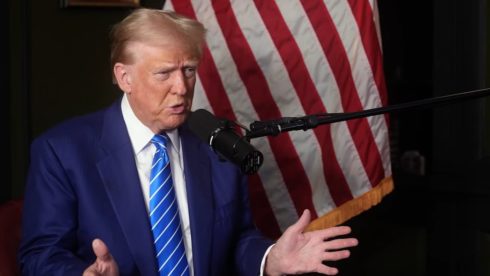President-elect Donald Trump is reportedly preparing to issue a controversial executive order on his first day in office, aimed at banning transgender individuals from serving in the U.S. military. The move would directly impact up to 15,000 active-duty service members, who would be deemed unfit for service and medically discharged. This sweeping action comes at a time when the military is grappling with recruitment challenges across all branches, further fueling the debate over the inclusion of transgender individuals in the armed forces.
Trump’s planned order is expected to take effect on January 20, 2025, marking the beginning of his second presidential term. Sources from The Sunday Times have revealed that the executive action would not only prevent transgender individuals from enlisting but would also force those currently serving to leave, significantly reshaping the military workforce. The decision is part of Trump’s broader effort to implement “anti-woke” policies, with his nominee for Secretary of Defense, Pete Hegseth, echoing similar sentiments in public statements. Hegseth, a former Fox News host, has expressed that the inclusion of transgender individuals in the military presents significant complications, calling it an issue that “pushes boundaries.”
The Controversial Backdrop: Trump’s History with Transgender Military Service
This move is not unprecedented. In 2017, then-President Trump attempted to ban transgender individuals from serving in the military, citing concerns over medical costs and the potential disruption to military readiness. His decision was driven by a belief that retaining service members with a history of gender dysphoria posed a risk to “military effectiveness and lethality.” The Trump administration argued that transgender service members might require extensive medical care, including hormone treatments and surgeries, which could impose a financial burden on the armed forces.
At the time, the Obama administration had reversed the longstanding policy that prohibited transgender individuals from serving openly. Under Obama, the Department of Defense began implementing measures to allow transgender personnel to serve authentically, and several transgender soldiers, like Major Jason Vero and Major Rachel Jones, have shared their experiences of overcoming personal struggles while serving in the military. Despite this, the Trump administration’s stance on the issue remains firm, with critics arguing that the president’s new directive would reverse progress made in fostering an inclusive military.
Transgender Troops and the Financial Burden on the Military
As of 2024, the Pentagon has spent over $26 million treating transgender troops, which has fueled ongoing debates about the financial impact of gender-affirming medical procedures. Since 2020, the military has allocated $17.5 million for psychotherapy and $1.5 million for hormone therapy for transgender service members. The increased number of transgender diagnoses within the military reflects broader societal trends toward greater acceptance of transgender individuals.
However, the military’s support for gender-affirming surgeries has drawn significant attention, with facial reconstruction surgeries being the most common procedure. These surgeries aim to align physical appearance with gender identity, with some service members opting for breast removal or even sex-reassignment surgeries. Despite these medical costs, military officials have stated that gender-affirming care remains essential for the well-being of transgender service members, and denying them such care would undermine military readiness and morale.
Recruitment and Policy Shifts: The Broader Implications for U.S. Armed Forces
The timing of Trump’s proposed executive order also highlights the growing challenges facing U.S. military recruitment. As the military struggles to meet recruitment goals, particularly in the face of global security threats, the decision to ban transgender individuals could further exacerbate these issues. While transgender service members make up a small fraction of the military population—approximately 0.3%—their contributions have been seen as vital in maintaining diversity and operational readiness.
Furthermore, with recruitment at a critical low, many analysts have raised concerns that such a policy could alienate a segment of the population willing to serve their country, potentially reducing the overall pool of eligible candidates. As the debate continues, it remains to be seen whether Trump’s executive order will stand, especially given the shifting political landscape and the growing visibility of transgender military service members who have proven their capabilities and commitment to the U.S. armed forces.














